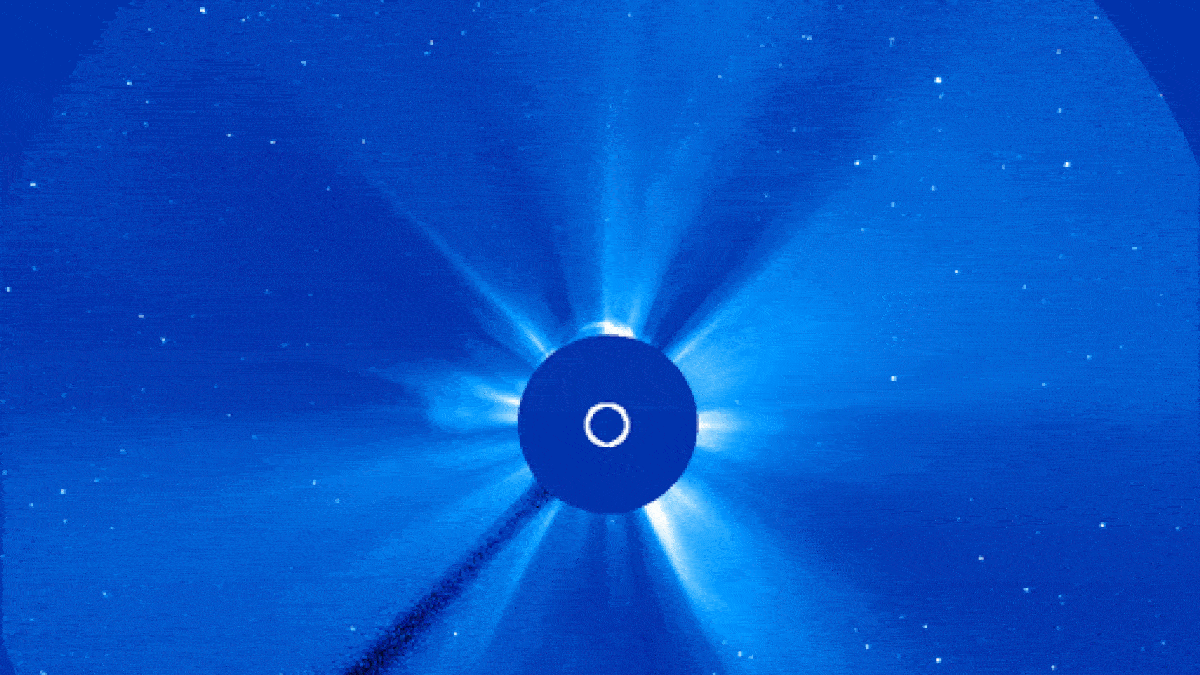Earth hit by radiation from rare 'double' X-class solar flare, triggering most powerful geomagnetic storm in 6 years
A recent X-class flare, which was split into two simultaneous explosions, launched a coronal mass ejection that smashed into Earth, triggering the most powerful disruption to our planet's magnetic field for more than six years.

The sun has just bombarded Earth with the most powerful geomagnetic storm our planet has seen in more than six years. The massive storm occurred after an eruption from an extremely rare "double" X-class flare disturbed Earth's magnetic field, lighting up the skies across the globe with vibrant auroras and other luminous phenomena.
The explosive event is another clear sign that the sun has likely reached the fiery peak of its roughly 11-year cycle of activity, known as solar maximum, meaning Earth could be in the firing line of more of these potentially harmful solar storms in the coming months.
On Saturday (March 23), the sun unleashed a 1.1 magnitude X-class solar flare — the most powerful type of explosion the sun can produce. This blast was unusual because it was made up of two simultaneous explosions, known as a sympathetic solar flare, ejected by a pair of sunspots (AR3614 and AR3615) separated by hundreds of thousands of miles, Spaceweather.com reported.
The tandem explosion launched a massive cloud of plasma and radiation into space, known as a coronal mass ejection (CME), that barreled into Earth's magnetosphere on Sunday (March 24). The collison sent shockwaves through the planet's invisible protective shield, temporarily weakening it. This allowed solar radiation to penetrate deeper into the atmosphere than normal and triggered auroras in Australia and New Zealand, as well as the aurora-like phenomenon STEVE (a.k.a. strong thermal emission velocity enhancement) in Alaska, according to Spaceweather.com.
Related: 10 solar storms that blew us away in 2023
At its peak, the geomagnetic storm reached severe (G4) status, according to the Space Weather Prediction Center, which is co-run by the National Oceanic and Atmospheric Administration (NOAA) and the National Weather Service. The last time Earth experienced a geomagnetic disturbance this powerful was September 2017, according to Spaceweather.com. (Geomagnetic storms range from minor (G1) to extreme (G5) intensity.)

The unusual nature of this solar explosion and intensity of the resulting geomagnetic storm are both clear indicators that the sun is nearing solar maximum.
Get the world’s most fascinating discoveries delivered straight to your inbox.
Some experts believe that the sun may have already entered this explosive phase, around a year earlier than initial forecasts predicted. But scientists won't know exactly when this period started until months after the sun eventually begins to calm down.

X-class flares become much more common during solar maximum. So far, six X-class flares have exploded from the sun in 2024, half as many as many that hit the planet in all of 2023, according to SpaceWeatherLive.com.
The increased frequency of these gargantuan explosions make strong geomagnetic storms more likely. In addition to colorful auroras, these storms can also impact ground-based infrastructure, cause satellites to tumble back to Earth and superheat the upper atmosphere.
The solar maximum coincides with the upcoming total solar eclipse on April 8, giving millions of skywatchers in North America the rare opportunity to view the sun’s fiery outer atmosphere, or corona, when the moon totally covers the sun’s disk for up to four and a half minutes. Given the amount of recent activity, the corona will likely be especially beautiful during totality. There is also a decent chance that onlookers may be able to see solar flares or CMEs during the event.

Harry is a U.K.-based senior staff writer at Live Science. He studied marine biology at the University of Exeter before training to become a journalist. He covers a wide range of topics including space exploration, planetary science, space weather, climate change, animal behavior and paleontology. His recent work on the solar maximum won "best space submission" at the 2024 Aerospace Media Awards and was shortlisted in the "top scoop" category at the NCTJ Awards for Excellence in 2023. He also writes Live Science's weekly Earth from space series.


